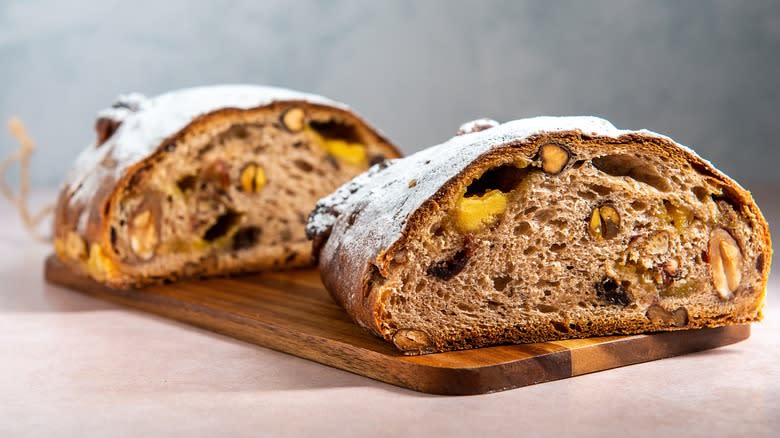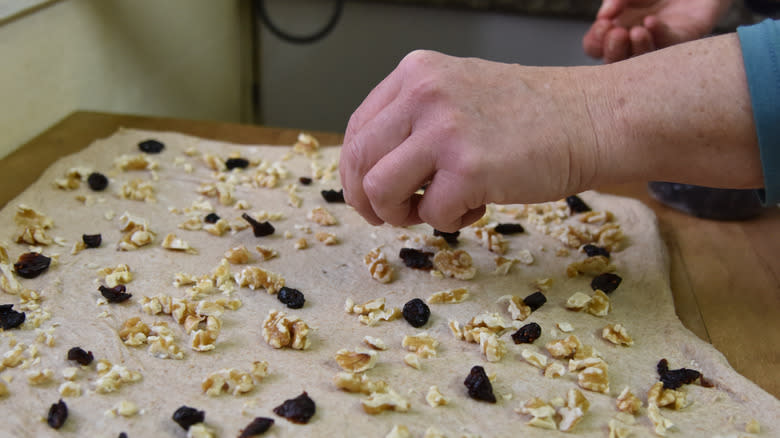This Is Exactly When You Should Add Inclusions When Making Sourdough

Homemade sourdough exemplifies what makes artisan bread so special: It's a labor of love to achieve a loaf with that tangy flavor, irresistibly soft airy interior, and crunchy crust. But inclusions can elevate a sourdough recipe to something even more special. Whether you use nuts, seeds, olives, fruits, herbs, or cheese, add-ins introduce new flavors and delightful textural contrasts, making each bite much more interesting. However, if you don't knead them into the dough at the right time, they could fall out or even inhibit the bread's rise.
For the best results, add inclusions during the second or third set of stretches and folds. By this point in the kneading stage, the dough has already gone through plenty of stretching and folding, so it's had the opportunity develop enough gluten, without any interference from add-ins. A robust gluten network is capable of supporting inclusions without dropping them, including hard ingredients like nuts and seeds.
Secondly, adding inclusions after you've fermented the dough can deflate it, ruining the rise that you've waited for all this time. It's better to do it before the fermentation stage. Lastly, with one or two more sets of stretch and folds remaining, the inclusions will be mixed and evenly distributed within the dough. This way, you don't need to worry about overworking your dough just to spread the add-ins around.
Read more: 11 Cleaning Tips For Keeping Your Oven Spotless
How To Add Inclusions To Sourdough

The next step to figure out is how to add the inclusions to sourdough. First, you'll need to measure the right amount of inclusions. If you're using add-ins like nuts, seeds, or dried fruits, calculate 20% to 25% of your dough's weight and use that number as a limit for how much you sprinkle in. For delicate inclusions like herbs, calculate 2% to 6% percent of the dough's weight.
To incorporate the add-ins into the dough, you choose one of two methods. The first method involves sprinkling the inclusions on the dough in your bowl and finishing the stretch and fold procedure as usual. The inclusions will naturally get mixed into the dough. The other method is the lamination technique, which can be more thorough if you're using fine ingredients like spices or very small seeds.
To try it, stretch out the dough on a floured surface to form a roughly rectangular shape. Sprinkle the inclusions on top and fold the dough in on itself, or roll it up into a log shape. Then, spread the dough into a rectangle again and repeat. No matter which method you choose, remember to always be gentle when working with your sourdough, especially after adding inclusions, so your dough doesn't deflate.
Read the original article on Tasting Table.


